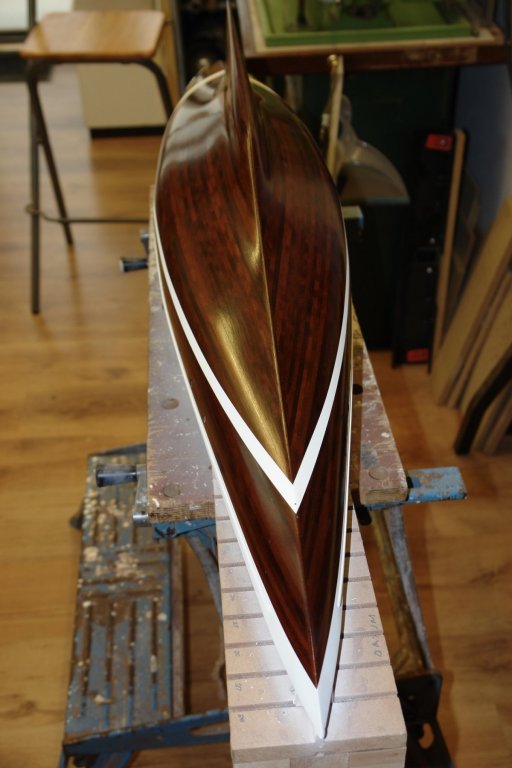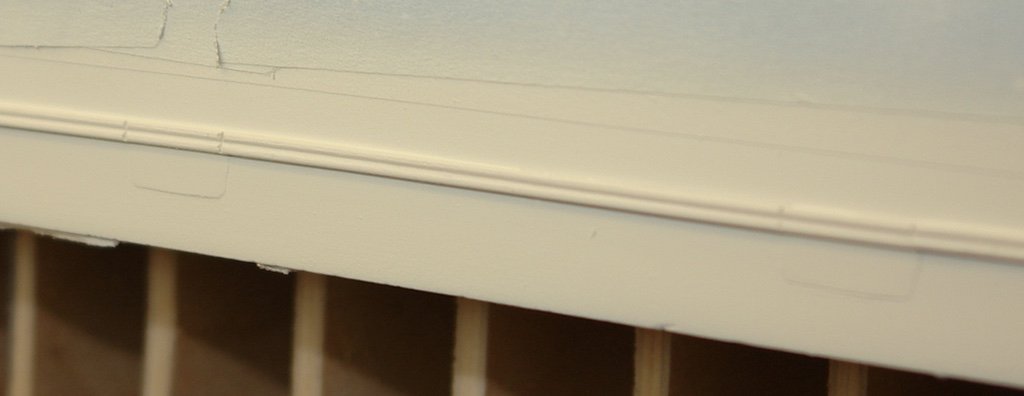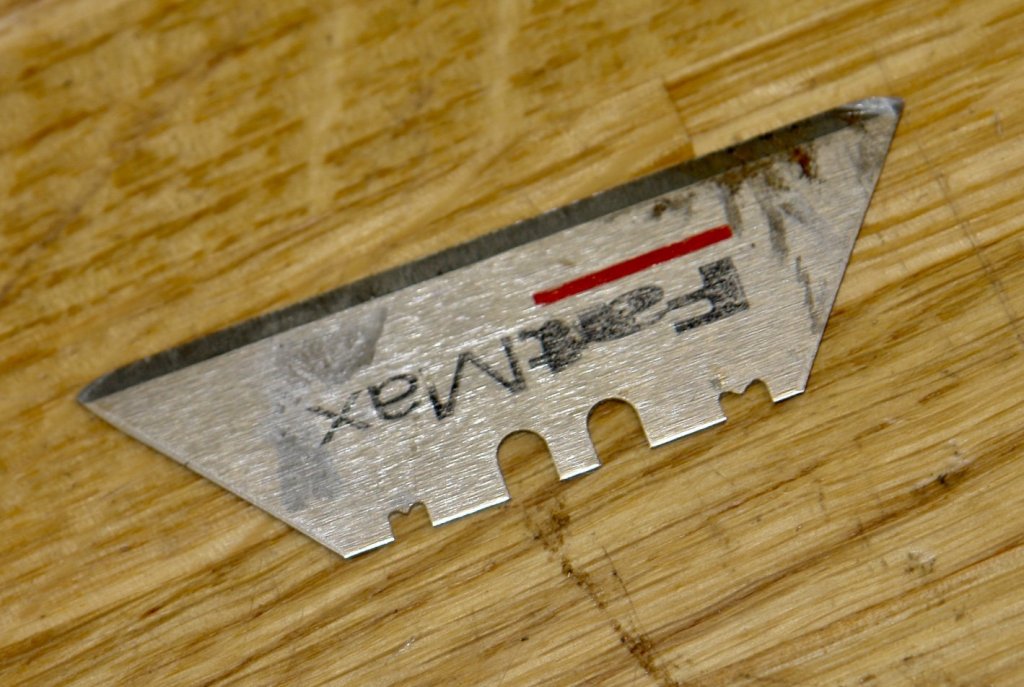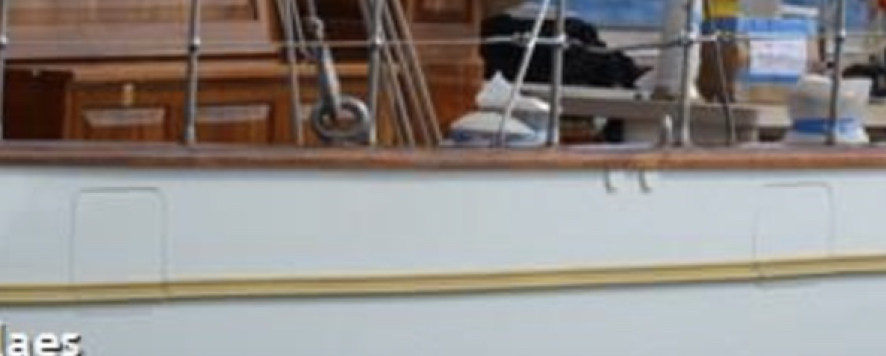-
Posts
3,926 -
Joined
-
Last visited
Content Type
Profiles
Forums
Gallery
Events
Everything posted by KeithAug
-
Nicely done Eberhard. I may copy your method of making / flaring the outboard end of the hawse pipes.
-
Beautifully neat work as usual Vossie. Nothing in life is certain - I bought a white dog and ended up with a spotty Dalmatian that thinks it's a seal.
- 714 replies
-
- lady nelson
- victory models
-
(and 1 more)
Tagged with:
-
Very neatly done Mark. Given your machine tool limitations you achieve remarkable results.
-
Gary, It used to be like this when I started my sailing career, we went everywhere with a compass and a trailing log and never failed to reach our destination. In latter years we had more electronics than I knew what to do with and on one notable occasion found ourselves in fog sailing across a headland (on land) or at least that is what the GPS told us. Your wheelhouses is beautifully fashioned and elegantly simple. thank you for the heads up on Gallery Glass - i will store that away for future reference.
-
Patrick, That's more like it - plastic plants - just what I would expect from the owner. I enjoyed catching up and share your misery that the build is coming to an end - never mind every end is just a new beginning.
-
Thank you all for your comments they are much appreciated. I continue to make very little progress. The weather has been generally good for almost a month and this means the garden drags me away from shipwright duties. I pray for rain and an enforced period of "shed" work. Here is the little progress I have made in the week since my last post. I am looking forward to getting the hull off the building frame - but first I need a cradle. I decided where I wanted the support to be and used the frame sections at these positions to make a template for the "saddle". The frames were cut from scrap 3/8" ply with the cutouts being 1/8 bigger all round. Notches were cut for the stringers and the stringers were notched to take the cutouts. I had a piece of 3M extra deep door draft excluder with which I lined the hull cut outs. I tested the fit and then glued the assembly together. I then glued in all the previously made portholes. To make sure that they all sat at the same depth below the surface of the hull I turned a .02" deep step in the end of a dowel and used this to push them into place. The rubbing strips need to be gold so I masked off the sides and ends of each strip. I then hand painted the gold with Humbrol enamel. I only needed to mask either side of the strip as over spray wasn't a problem---------------but the same couldn't be said for drips!!!!!! Fortunately the drip on to the white was easily corrected. The finished result looks fine. I now have to decide how to do the decoration at each end of the rubbing strips. The scale size of these features isn't terribly large the former will be about 2" long and the latter about 1". I'm not sure how I am going to do this but my current thoughts are to try making the latter from Fimo. The fineness of the swirls on the former make me think Fimo isn't a good option for this. All suggestions are welcome.
-
Mark - very nicely done ------- but should you be using that base as a work surface???? or is it just a convenient photo stand?
-
Gary - I continue to be impressed your staining techniques. Maybe you should write a guide some day.
-
Nicely done Dan. Enjoy the Danube and the fine local wine and beer.
- 238 replies
-
- leviathan
- troop ship
-
(and 2 more)
Tagged with:
-
I think you must be mistaken Patrick. Anyone with the lack of taste required to own Genesis (or much modern art for that matter) would find it hard to appreciate a gaff rigged yacht. I think it must belong to the apprentice engine room technician - he would appreciate it. By the way you forgot to put the dinghy on the yacht.
-
Vaddoc - just a cautionary note. I use beading wire but invariably find I end up redoing some shrouds when they go slack. I think the slackening is associated with the wood of the hull and masts contracting a little when exposed to the dry environment of the lounge. You may want to aclimatise the model before embarking on rigging. Very nice job on the cleats. Your process for making them would be interesting to know if you have time.
-
Keith - they both looked and seemed satisfied. I didn't like to press them in case they changed their minds.
-
I had an internet access problem for most of the week but finally it seems to be in the past. It was 8 days ago that I last posted and the new airbrush arrived a week ago today. Over Sunday trough Tuesday I applied 7 coats of white matt Humbrol enamel paint, - oil based and diluted to the consistency of skimmed milk. The barely visible effect that I was trying to achieve on the scupper doors turned out how I wanted. I took a lot of care to press down the edges of the masking tape. Fortunately this paid off as I got no bleed at all. The tape came off cleanly and fortunately didn't pull of any of the poly layers. Given the interest previously shown in the paint scheme i have included a number of photos.
-
Peter. I have seen both pale and the more yellow boxwood - seen in your photographs. If you are anything like my age you may recall the wooden foot rules from school. These were invariably made from boxwood and my recollection is that they were generally the colour in your photo. The real question is what effect you are trying to achieve on your model and whether the darker colour is a problem. I keep this as a handy reference as to the more common woods to use...........http://modelshipbuilder.com/page.php?49
-
Patrick, he could consider flogging his art collection and investing the proceeds in a sensible / stylish classic yacht. I see he / she isn’t into classical art. I’m not really surprised!!!! You need to find the crappy photo setting on your camera, it is great for washing out the detail. All my cameras come with this as the default setting. Amazing detail, just love it.
-
Mark / John - you both make plausible suggestions. Whatever the reasoning it is still in a vulnerable position and somewhat weaker than it need have been. Maybe people with millions to spend don’t worry about repair bills.
-
Druxey - yes you make a good point. It is all low tack tape and the edging tape is Tamiya tape but never the less I agree it should not be on for more than a few days. Hopefully the airbrush will be here on Saturday and at 3 coats a day I should have the paintwork finished by late Monday.
-
Eberhard - Yes I agree. As I look at more of the detail I find a few things that are not as I would want them. I wonder if some of the build was compromised by rushed design or build. With particular respect to the rubbing strip, clearly any discontinuity weakens the strip itself and introducing vertical edges provides opportunity for the strip to be caught and pulled off when rubbing against the dock. Like you I can not remember a yacht that I have been on where the rubbing strip is compromised in this way.
-
Before making the rubbing strip I completed the bulwark stipe masking at the stern. The rather rough marking was improved by removing the tape, smoothing with a french curve, cutting and then replacement. As far as I can tell the rubbing strip is of double "U" profile. I used the back edge of a box cutte blade for the scraper. Profile notches were cut in with a grinding disc mounted in a craft drill. I did this twice, the wider notch on the right proved to be too wide. The one on the left is .090" wide and this looked more in scale when offered up to the hull. The big advantage of using the back of the blade is that the blade itself can be left razor sharp for later use....................................................................................................... just kidding, I ground the edge off to avoid slicing my fingers. The strips were made from old Venetian Blind slats - not sure what wood but it has very fine and straight grain. The profile was scraped before the profiled edge was slit off on the circular saw using a .031" slitting saw blade. The strip was .050 thick (1.8" at full size). the rubbing strip fully overlaps the bottom edge of the scupper doors and hence is cut to allow the doors to open. The back of the rubbing strip had to be relieved to fit over the scupper doors. The strip was offered up to the hull, the scupper positions marked and then the relief scraped away using a box cutter blade. I also took the opportunity to mask off the remainder of the "not to be painted" hull. The rubbing strips were then clamped in place following the line of the deck edge (the lower edge of the lower bulwark plank). With the strips clamped in place a thin bead of CA glue was run along the edge and allowed to weep behind the strip by capillary action. A fine line was then marked at the scupper sides using a craft knife. I have ordered a replacement airbrush to replace some cheap ones bought with the compressor. When it arrives I will get on painting the hull.
About us
Modelshipworld - Advancing Ship Modeling through Research
SSL Secured
Your security is important for us so this Website is SSL-Secured
NRG Mailing Address
Nautical Research Guild
237 South Lincoln Street
Westmont IL, 60559-1917
Model Ship World ® and the MSW logo are Registered Trademarks, and belong to the Nautical Research Guild (United States Patent and Trademark Office: No. 6,929,264 & No. 6,929,274, registered Dec. 20, 2022)
Helpful Links
About the NRG
If you enjoy building ship models that are historically accurate as well as beautiful, then The Nautical Research Guild (NRG) is just right for you.
The Guild is a non-profit educational organization whose mission is to “Advance Ship Modeling Through Research”. We provide support to our members in their efforts to raise the quality of their model ships.
The Nautical Research Guild has published our world-renowned quarterly magazine, The Nautical Research Journal, since 1955. The pages of the Journal are full of articles by accomplished ship modelers who show you how they create those exquisite details on their models, and by maritime historians who show you the correct details to build. The Journal is available in both print and digital editions. Go to the NRG web site (www.thenrg.org) to download a complimentary digital copy of the Journal. The NRG also publishes plan sets, books and compilations of back issues of the Journal and the former Ships in Scale and Model Ship Builder magazines.












